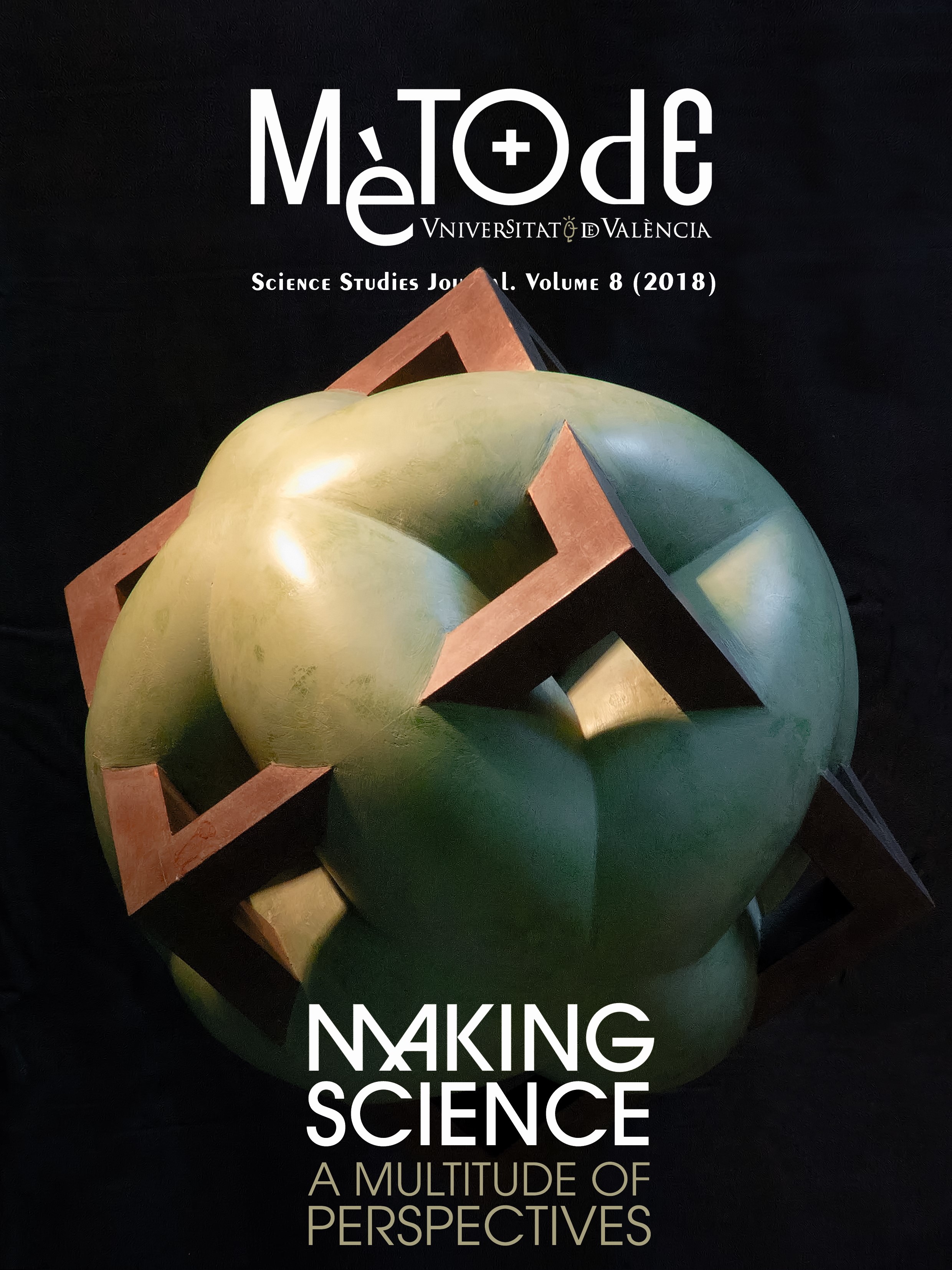Divanes y gurús: El origen y los peligros de la pseudopsicología clínica
DOI:
https://doi.org/10.7203/metode.8.9977Palabras clave:
pseudociencia, psicología, psicoanálisis, new age, psicoterapias Resumen
Resumen
La pseudociencia presenta una alarmante presencia en el contexto de la psicología clínica y es, además, muy peligrosa. Como conjunto de ideas pseudocientíficas, la pseudopsicología clínica muestra la peculiar característica de constituir toda una tradición paralela a la psicología, con numerosas ramificaciones y desarrollos teóricos y prácticos interrelacionados. En este escrito repasaremos esa tradición, desde la hipnosis pseudocientífica hasta el psicoanálisis, y desde la new age hasta la actual neuropseudociencia. Tras ello, revisaremos algunos de los peligros de la pseudociencia relacionada con los trastornos mentales.
 Descargas
Descargas
 Citas
Citas
Braun, K. A., Ellis, R., & Loftus, E. F. (2002). Make my memory: How advertising can change our memories of the past. Psychology & Marketing, 19(1), 1–23. doi: 10.1002/mar.1000
Cuijpers, P., Sijbrandij, M., Koole, S. L., Andersson, G., Beekman, A. T., & Reynolds, C. F. (2013). The efficacy of psychotherapy and pharmacotherapy in treating depressive and anxiety disorders: A meta-analysis of direct comparisons. World Psychiatry, 12(2), 137–148. doi: 10.1002/wps.20038
Darnton, R. (1968). Mesmerism and the end of the Enlightenment in France.Cambridge: Harvard University Press.
Fasce, A. (2017). Los parásitos de la ciencia. Una caracterización psicocognitiva del engaño pseudocientífico. Theoria: An International Journal of Theory, History and Foundations of Science, 32(3): 345-363. doi: 10.1387/theoria.17775
Gauld, A. (1992). A history of hypnotism.New York: Cambridge University Press.
Gelfand, T., & Kerr, J. (1992). Freud and the history of psychoanalysis.New Jersey: The Analytic Press.
Hansson, S. O. (2009). Cutting the Gordian Knot of demarcation. International Studies in the Philosophy of Science, 23(3), 237–243. doi: 10.1080/02698590903196007
Heelas, P. (1996). The New Age Movement. New Jersey: Blackwell Publishing.
Herbert, J. D., Lilienfeld, S. O., Lohr, J. M., Montgomery, R. W., T O’Donohue, W., Rosen, G. M., & Tolin, D. F. (2000). Science and pseudoscience in the development of eye movement desensitization and reprocessing: Implications for clinical psychology. Clinical Psychology Review, 20(8), 945–971. doi: 10.1016/S0272-7358(99)00017-3
Hughes, S., Lyddy, F., & Lambe, S. (2013). Misconceptions about psychological science: A review. Psychology Learning and Teaching, 12(1), 20–31. doi: 10.2304/plat.2013.12.1.20
Johnson, M., & Pigliucci, M. (2004). Is knowledge about science associated with higher skepticism of pseudoscientific claims? The American Biology Teacher, 66(8), 536–548. doi: 10.2307/4451737
Lilienfeld, S. O. (2007). Psychological treatments that cause harm. Perspectives on Psychological Science, 2(1), 53–70. doi: 10.1111/j.1745-6916.2007.00029.x
Lilienfeld, S. O., Lynn S. J., & Lohr, J. M. (Eds). (2003). Science and pseudoscience in clinical psychology.New York: The Guilford Press.
Lilienfeld, S., Lohr, J., & Morier, D. (2004). The teaching of courses in the science and pseudoscience of psychology: Useful resources. Teaching of Psychology, 28(3), 182–191. doi: 10.1207/S15328023TOP2803_03
Loftus, E., & Ketcham, K. (1994). The myth of repressed memory.New York: St. Martin’s Press.
Majima, Y. (2015). Belief in pseudoscience, cognitive style and science literacy. Applied Cognitive Psychology, 29(4), 552–559. doi: 10.1002/acp.3136
Marcus, D. K., O’Connell, D., Norris, A. L., & Sawaqdeh, A. (2014). Is the Dodo bird endangered in the 21st century? A meta-analysis of treatment comparison studies. Clinical Psychology Review, 34(7), 519–530. doi: 10.1016/j.cpr.2014.08.001
Meyer, C. (Ed.). (2005). Le livre noir de la psychanalyse: Vivre penser et aller mieux sans Freud. Paris: Les Arènes.
Salkovskis, P. (2002). Review: Eye movement desensitization and reprocessing is not better than exposure therapies for anxiety or trauma. Evidence-based Mental Health, 5(1), 13. doi: 10.1136/ebmh.5.1.13
Singer, M., & Lalich, J. (1996). Crazy therapies: What are they? Do they work? New Jersey: Jossey-Bass.
Stapleton, P., Chatwin, H., Boucher, E., Crebbin, S., Scott, S., Smith, D., & Purkis, G. (2015). Use of complementary therapies by registered psychologists: An international study. Professional Psychology: Research and Practice, 46(3), 190–196. doi: 10.1037/pro0000015
Smit, Y., Huibers, M. J., Ioannidis, J. P., Van Dyck, R., Van Tilburg, W., & Arntz, A. (2012). The effectiveness of long-term psychoanalytic psychotherapy: A meta-analysis of randomized controlled trials. Clinical psychology review, 32(2), 81–92. doi: 10.1016/j.cpr.2011.11.003
Descargas
Publicado
Cómo citar
-
Resumen2651
-
PDF 1332
Número
Sección
Licencia
![]()
Todos los documentos incluidos en OJS son de acceso libre y propiedad de sus autores.
Los autores que publican en esta revista están de acuerdo con los siguientes términos:
- Los autores conservan los derechos de autor y garantizan a Metode Science Studies Journal el derecho a la primera publicación del trabajo, licenciado bajo una licencia de Creative Commons Reconocimiento-NoComercial-SinObraDerivada 4.0 Internacional, que permite a otros compartir el trabajo con un reconocimiento de la autoría del trabajo y citando la publicación inicial en esta revista.
- Se permite y se anima a los autores a difundir sus trabajos electrónicamente a través de páginas personales e institucionales (repositorios institucionales, páginas web personales o perfiles a redes profesionales o académicas) una vez publicado el trabajo.





